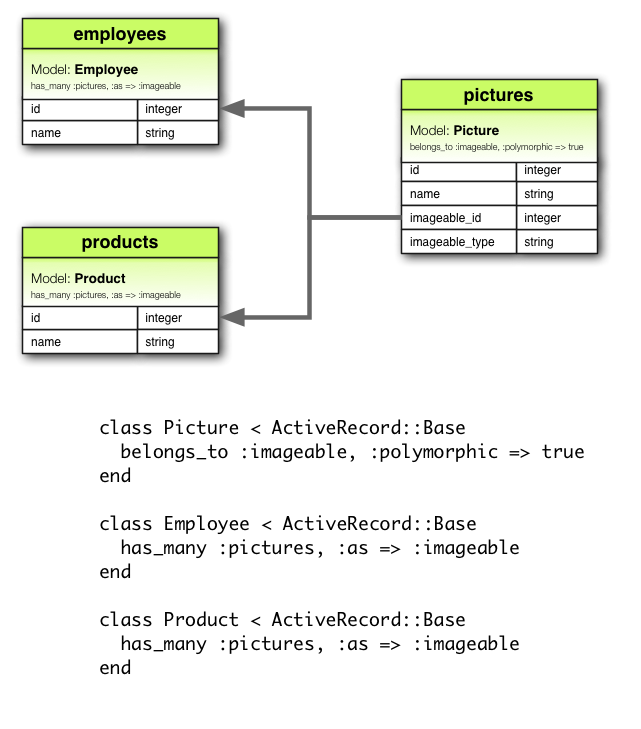Rails Generate Model Foreign Key References
TableDefinition#references will add an appropriately-named id column, plus a corresponding type column if the:polymorphic option is supplied. If:polymorphic is a hash of options, these will be used when creating the type column. The:index option will also create an index, similar to calling addindex. So what can be written like this. We want it to default to false for new users, but existing users are considered to have already opted in, so we use the User model to set the flag to true for existing users. Rails 3.1 makes migrations smarter by providing a new change method. This method is preferred for writing constructive migrations (adding columns or tables). The key references the id column of the authors table. If the column names cannot be derived from the table names, you can use the:column and:primarykey options. Rails will generate a name for every foreign key starting with fkrails followed by 10 characters which are deterministically generated from the fromtable and column. Bin/rails generate migration AddPostToComments post:references; That will create a migration with a call to the addreference method instead of addcolumn. Addreference takes a symbol with a table name, and a symbol with the name of a model to add a foreign key for. It'll create a column whose name begins with that model name, and ends in id. Advanced Rails model generators rails. There are some people who give advice to not use rails generators and create models, controllers and etc. Things manually. I don’t agree with them and my advice here is to figure out deeply how they work and then make conclusion.
Migrations
App on mac for checking cpu. To create a completely brand new reference with a foreign key(in Rails 4.2), generate a migration using the following command: which will create a migration file as: This will add a new foreign key to the userid column of the uploads table. The key references the id column in users table. Starcraft wings of liberty cd key generator.
Migrations are a convenient way for you to alter your database in a structuredand organized manner. You could edit fragments of SQL by hand but you would thenbe responsible for telling other developers that they need to go and run them.You’d also have to keep track of which changes need to be run against theproduction machines next time you deploy.
Active Record tracks which migrations have already been run so all you have todo is update your source and run rake db:migrate. Active Record will work outwhich migrations should be run. It will also update your db/schema.rb file tomatch the structure of your database.
Migrations also allow you to describe these transformations using Ruby. Thegreat thing about this is that (like most of Active Record’s functionality) itis database independent: you don’t need to worry about the precise syntax ofCREATE TABLE any more than you worry about variations on SELECT * (you candrop down to raw SQL for database specific features). For example you could useSQLite3 in development, but MySQL in production.
In this guide, you’ll learn all about migrations including:

- The generators you can use to create them
- The methods Active Record provides to manipulate your database
- The Rake tasks that manipulate them
- How they relate to schema.rb
Chapters
Rails Generate Model With Foreign Key
Foreign Key In Mysql
- Anatomy of a Migration
- Creating a Migration
- Writing a Migration
- Running Migrations
- Schema Dumping and You